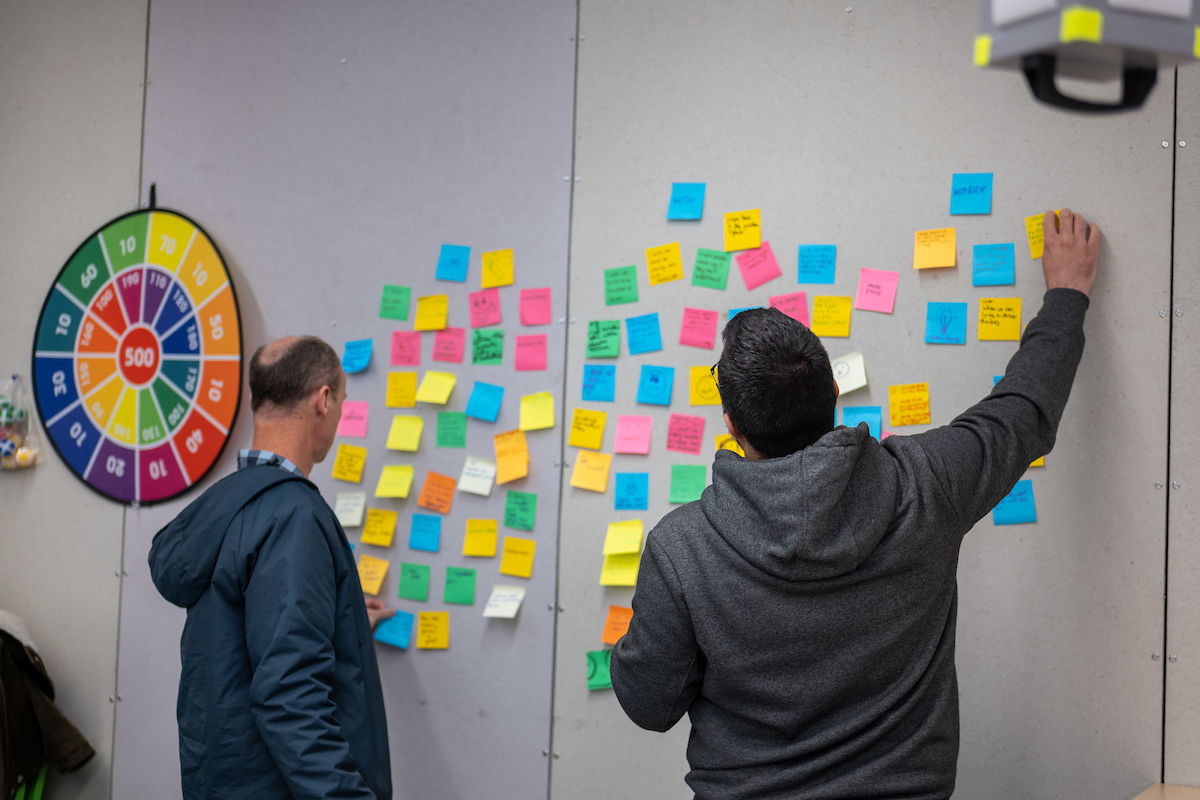In the Digital Division we believe that in order to transform Higher Education, we need to be transformative in how we work and innovative in what we do.
Agile as a methodology is a new concept to many at the University and comes with some new words and phrases. Perhaps you’ve just begun using Agile ways of working and feel like everyone’s speaking a different language – well, we’re here to help. Below are some definitions of common phrases from the Agile dictionary that we will be using throughout our digital journey to achieving our 2030 Digital Strategy.
Agile terminology:
DIGITAL TRANSFORMATION: The strategic adoption of digital technologies used to improve processes and productivity, deliver better customer and employee experiences, manage business risk, and control costs.
SQUAD: A team focussed on one product or project, from a range of teams representing a variety of skills. They are designed to feel like a mini startup. A squad should hold all the expertise and tools needed to design, develop, test, and release. They are self-organising and can define their own way of working.
AGILE: An iterative approach to work that helps teams deliver value faster and with fewer headaches. Agile teams deliver work in small, consumable increments.
USERS: For the University, a user could be a learner, applicant, educator, researcher, employee, candidate, alum, third party, or anyone interacting with our services or products
SCRUM: A process framework used to manage product development and other knowledge work.
SCRUM MASTER: The role responsible for ensuring the team uses agile values and principles and follows the processes and practices that the team agreed they would use.
MVP (MINIMUM VIABLE PRODUCT): A concept from Lean Startup that stresses the impact of learning in new product development. It is a version of a new product which allows a team to collect the maximum amount of validated learning about users with the least effort.
PRODUCT OWNER: The role responsible for managing the product backlog to achieve the desired outcome that a development team seeks to accomplish. They work with stakeholder and user needs to maximise the success of products.
UI (User Interface): The visual layout and design of a product or application as seen by the user. UI designers work closely with other members of a product development team to ensure that the product’s user interface meets the needs and expectations of the target audience.
UX (User Experience): UX design involves designing the overall experience of a digital product or service. The goal of UX design is to create products that are easy to use, effective, and enjoyable for users.
UX RESEARCH: UX researchers use a mix of methods such as interviews, diary studies and usability tests to understand user needs and wants. Working closely with product managers, UX researchers add context and insight to digital products, ensuring products are built with users’ choices and preferences at heart.
Keep up to date with what we are up to in UoE Digital through our blog and website, and view our Digital Strategy 2030 for more info on how we are becoming the most accessible and connected University destination for any user.

